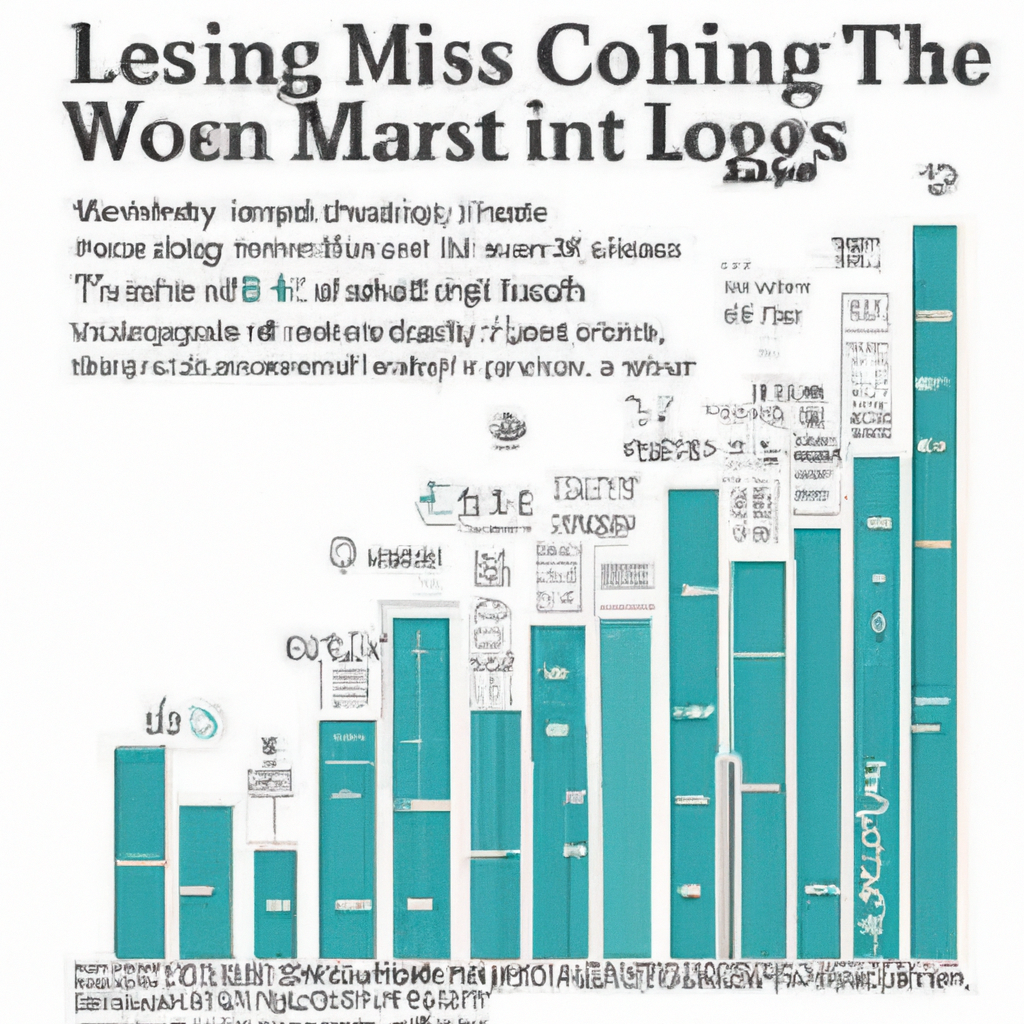Living in major US cities can be quite an expensive endeavor. From the bustling streets of New York City to the picturesque avenues of San Francisco, the cost of living can vary significantly. Whether it’s the skyrocketing rents, hefty grocery bills, or exorbitant transportation costs, navigating the financial landscape of these cities can be a daunting task. In this article, we’ll explore the realities of the cost of living in major US cities and provide insights into how individuals can manage their finances effectively. So, grab a cup of coffee and get ready to unravel the intricacies of city living!
Housing
Renting vs. Buying
When it comes to housing, one of the first decisions you’ll have to make is whether to rent or buy a home. Renting offers flexibility and the ability to move easily, while buying provides the potential for building equity and long-term stability. In major US cities, the choice between renting and buying often depends on various factors such as your financial situation, lifestyle, and future goals. It’s important to carefully consider your options and evaluate the housing market in your desired city before making a decision.
Average Rent Prices
Rent prices in major US cities can vary significantly depending on factors such as location, size, and amenities. Generally, cities with a higher cost of living tend to have higher rent prices. For example, in cities like New York, San Francisco, and Los Angeles, the average rent prices for a one-bedroom apartment can be well above $2,000 per month. On the other hand, cities in the Midwest or Southeast may have more affordable rent prices, with averages ranging from $800 to $1,500 per month for a similar apartment.
Homeownership Rates
Homeownership rates also vary across major US cities. Some cities have a high percentage of residents who own their homes, while others have a higher proportion of renters. Factors such as housing affordability, job stability, and population density can influence homeownership rates. Cities like San Francisco and New York have relatively low homeownership rates due to the high cost of housing, while cities in the Midwest or South have higher homeownership rates due to more affordable housing options.
Affordability Challenges
One of the biggest challenges many people face in major US cities is the affordability of housing. With rapidly rising housing prices and limited supply, finding an affordable home can be a daunting task. Many residents may find themselves spending a significant portion of their income on housing, leaving less room for savings and other expenses. Affordable housing programs and initiatives are often in place to help low-income individuals and families access safe and affordable housing options.
Availability of Affordable Housing
The availability of affordable housing in major US cities is a pressing issue. As housing costs continue to rise, the gap between income and housing affordability widens, making it more difficult for individuals and families to find suitable homes. Local governments and organizations are working towards increasing the supply of affordable housing units through various strategies such as subsidies, tax incentives, and partnerships with developers. However, the demand for affordable housing still outweighs the available options in many cities, creating challenges for those in need.
Transportation
Public Transportation Costs
Using public transportation in major US cities can be a cost-effective option for commuting and getting around. Public transportation systems vary from city to city, but most offer a range of affordable options such as buses, trains, and subways. The cost of public transportation can depend on factors like distance traveled, frequency of use, and whether or not you qualify for discounted fares. Monthly passes or reloadable cards can provide savings for regular users, while single-ride fares are available for occasional travelers.
Car Ownership Expenses
Owning a car comes with its own set of expenses, including car payments, insurance, maintenance, and fuel costs. In major US cities, the cost of car ownership can be significant due to factors such as high insurance rates, expensive parking fees, and the need for regular maintenance in congested urban areas. Additionally, the cost of parking can vary greatly depending on the city and location, with rates ranging from a few dollars to several hundred dollars per month.
Gasoline Prices
Gasoline prices fluctuate regularly, but they can have a significant impact on your overall transportation costs. In major US cities, factors such as taxes, local regulations, and proximity to refineries can influence the price of gasoline. Generally, urban areas and coastal cities tend to have higher gas prices compared to suburban or rural areas. It’s important to factor in the cost of gasoline when budgeting for transportation expenses, especially if you rely heavily on a personal vehicle for your daily commute.
Parking Fees
Parking fees can add up quickly, especially in major US cities where parking can be limited and expensive. Whether you park on the street, in parking garages, or use parking meters, the cost of parking can vary significantly depending on the city and location. Downtown areas and popular neighborhoods often have higher parking rates, which can range from a few dollars per hour to over $50 for a full day. It’s important to plan ahead and budget for parking expenses if you own a car in a major US city.
Ride-Sharing Services
Ride-sharing services like Uber and Lyft have become increasingly popular in major US cities as an alternative to traditional taxis and public transportation. These services offer convenience and flexibility, allowing you to request a ride with just a few taps on your smartphone. However, it’s important to consider the cost when using ride-sharing services frequently. The price of rides can vary depending on factors such as distance, demand, and surge pricing during peak times. Using ride-sharing services sparingly or opting for shared rides can help save on transportation costs.

Food and Groceries
Average Food Expenses
The cost of food in major US cities can vary depending on various factors such as location, dining preferences, and lifestyle. Eating out at restaurants or ordering takeout regularly can significantly impact your food expenses. On average, a meal at a mid-range restaurant can cost between $10 to $25 per person, while a fine dining experience can easily exceed $50 per person. Cooking at home and meal planning can help reduce food expenses, with the cost of groceries averaging anywhere from $200 to $500 per month, depending on your dietary choices and eating habits.
Restaurant Prices
Dining out in major US cities can be a delightful experience, with an array of culinary options available. However, it’s important to consider restaurant prices when planning your budget. Upscale restaurants and trendy eateries tend to have higher prices, while casual dining or ethnic establishments may offer more affordable options. Considering lunch specials, happy hour menus, or exploring local food neighborhoods can help you find delicious meals at more reasonable prices.
Grocery Store Costs
Grocery store costs can vary slightly between major US cities due to factors such as local taxes, competition, and regional availability of certain products. Generally, larger supermarket chains offer a wide variety of options at competitive prices, while smaller specialty stores or organic markets may have higher prices for niche products. It’s worth exploring different grocery stores in your area and comparing prices to find the best deals. Additionally, shopping for sales, using coupons, and buying in bulk can help stretch your food budget further.
Farmers Markets and Local Produce
Farmers markets offer an opportunity to purchase fresh, locally sourced produce and other artisanal products. They not only support local farmers and small businesses but also provide an avenue for consumers to access high-quality ingredients. Prices at farmers markets can vary depending on the location and seasonality of the produce. While they may not always be the most affordable option, farmers markets offer a unique experience and a chance to support local agriculture.
Food Delivery Services
Food delivery services have gained popularity in recent years, providing convenience and a wide selection of cuisine straight to your doorstep. However, it’s essential to consider the additional costs associated with food delivery, such as service fees, delivery charges, and tips for drivers. While the convenience may be worth the extra expense on occasion, relying on food delivery regularly can significantly impact your overall food expenses. Balancing dining out, cooking at home, and occasional food delivery can help manage costs effectively.
Utilities
Electricity Rates
The cost of electricity can vary between major US cities due to factors such as resources used for power generation and regional regulations. Prices are typically measured in kilowatt-hour (kWh), and rates can range from around $0.10 to $0.30 per kWh. Factors such as energy efficiency, climate, and personal consumption habits will impact the overall electricity bill. Being mindful of energy usage, investing in energy-efficient appliances, and considering alternative energy sources like solar panels can help lower electricity costs.
Water and Sewage Costs
Water and sewage costs are essential utilities that can vary depending on the city and region. In major US cities, water rates are typically based on consumption, with a monthly charge determined by the amount of water used. Sewage costs are often calculated as a percentage of the water bill. Rates for both water and sewage can range from $30 to $100 per month, depending on factors such as the size of the household and local regulations. Conserving water, fixing leaks promptly, and using more water-efficient fixtures can help lower these costs.
Heating and Cooling Expenses
The cost of heating and cooling your home can vary greatly depending on factors such as climate, insulation, and energy sources available in your area. In colder regions, heating expenses during the winter months can be significant, while cooling costs in warmer climates can add up during the summer. Generally, heating with electricity tends to be more expensive than natural gas or other fuel sources. Insulating your home, sealing drafts, using programmable thermostats, and regularly maintaining heating and cooling systems can help reduce energy consumption and lower utility bills.
Internet and Cable Charges
Access to the internet has become a necessity in today’s digital age, and the cost of internet service can vary between major US cities. Prices can depend on factors such as the speed of the connection, available providers, and bundled services with cable or phone. On average, monthly internet costs range from $30 to $100, depending on the plan and additional services. Cable television packages can add an additional cost to your monthly bills. Comparing offers from different providers and considering streaming services as an alternative to cable TV can help you find the best value for your money.
Trash and Recycling Collection
Trash and recycling collection services are essential for maintaining a clean and sustainable living environment. In major US cities, the cost of trash and recycling collection is often included as part of property taxes or utility fees. However, in some cities, residents may have to pay an additional fee for these services. The cost can vary depending on factors such as the frequency of collection, the size of the household, and the level of service provided. Ensuring proper recycling practices and minimizing waste can help reduce the overall cost of these services.

Healthcare
Health Insurance Premiums
The cost of health insurance premiums can vary depending on factors such as your age, health status, location, and coverage options. In major US cities, health insurance costs can be higher due to a higher cost of living and increased demand for healthcare services. Premiums can range from a few hundred dollars to over a thousand dollars per month, depending on the type of coverage and the insurance provider. It’s important to carefully review different health insurance plans and consider factors such as deductibles, copayments, and coverage limits to find the best option for your needs and budget.
Hospital and Doctor Fees
Hospital and doctor fees are essential components of healthcare costs. The cost of medical services can vary between major US cities due to factors such as regional healthcare markets, supply and demand, and the complexity of the procedures. Routine check-ups and general appointments tend to be more affordable, while specialized treatments or surgeries can be costly. Additionally, the type of healthcare provider, such as a private practice or a hospital-affiliated clinic, can impact the fees charged. It’s important to understand your insurance coverage, negotiate costs where possible, and consider alternative providers or clinics for more affordable options.
Prescription Drug Costs
Prescription drug costs in major US cities can vary greatly depending on the specific medication, availability of generic alternatives, insurance coverage, and pharmacy options. While health insurance can help mitigate the cost of prescription drugs, copayments and deductibles can still add up. Prices can range from a few dollars for generic medications to hundreds or even thousands of dollars for specialty drugs. Utilizing prescription discount programs, comparison shopping between pharmacies, and considering mail-order options can help save on prescription drug costs.
Dental and Vision Care Expenses
Dental and vision care are important aspects of overall healthcare but are often not fully covered by health insurance. The cost of dental and vision care services can vary depending on factors such as location, provider, and the specific treatment required. Routine dental check-ups and eye exams are usually more affordable, while orthodontic work, specialized lenses, or laser eye surgery can be more expensive. Dental and vision insurance plans, if available, can help offset some of these costs. Additionally, seeking out discounted dental clinics or vision centers can provide more affordable options for these essential services.
Access to Healthcare Facilities
Access to healthcare facilities, including hospitals, clinics, and specialized centers, is crucial for maintaining good health. In major US cities, the availability and proximity of healthcare facilities can vary depending on factors such as population density, healthcare infrastructure, and insurance coverage. While many cities have an abundance of healthcare providers, some underserved areas may have limited accessibility. It’s important to factor in the proximity and availability of healthcare facilities when considering the cost of living in a major US city, especially if you have specific healthcare needs or chronic conditions.
Education
Public School Expenses
Public education is often funded by property taxes and government allocations, making public schools in major US cities generally free for residents. However, there can still be additional expenses associated with public education such as fees for extracurricular activities, school supplies, and uniforms. These costs can vary between schools and districts, with some offering financial assistance programs for families in need. It’s important to inquire about any additional expenses when enrolling your children in public schools and plan accordingly.
Private School Tuition
Private schools offer an alternative to public education in major US cities, but they come at a cost. Private school tuition can vary greatly depending on factors such as the school’s reputation, location, and the grade level. Tuition fees can range from a few thousand to tens of thousands of dollars per year per student. It’s important to carefully consider the financial implications of private school tuition and assess the value and benefits it may offer to your child’s education.
College and University Costs
Higher education costs can be a significant financial consideration when living in major US cities. College and university tuition varies widely based on factors such as in-state or out-of-state residency, public or private institutions, and the specific program or course of study. Tuition fees alone can range from a few thousand dollars per year for public community colleges to tens of thousands of dollars per year for private universities. Additional expenses to consider include textbooks, housing, meal plans, and transportation. Exploring financial aid options, scholarships, or attending community colleges before transferring to a four-year institution can help mitigate the overall cost of college education.
Books and Supplies
The cost of books and supplies can add up during your education journey. Depending on the program or courses, textbooks can range from a few dollars to over a hundred dollars per book. Additionally, school supplies such as notebooks, calculators, and art materials can contribute to the overall expense. To save on these costs, consider renting or buying used textbooks, exploring online resources, or sharing materials with classmates. Planning ahead and budgeting for these expenses can help manage education costs effectively.
Education Quality
Education quality is an important consideration when choosing to live in a major US city. While public schools are generally free, the quality of education can vary between districts and schools. Factors such as teacher-to-student ratios, resources and facilities, extracurricular programs, and graduation rates can impact the overall quality of education. Researching school ratings, visiting schools, and speaking with other parents can help gauge the education quality in a particular city or neighborhood.

Taxes
Income Tax Rates
Income tax rates can vary between major US cities and states. The amount of income tax you pay depends on factors such as your income level, filing status, and the specific tax regulations of the jurisdiction. Some cities and states have progressive tax systems, meaning that higher-income earners pay a higher percentage of their income in taxes. It’s important to be aware of the income tax rates in your desired city and factor them into your budget when considering the cost of living.
Property Taxes
Property taxes are a significant component of the overall cost of owning a home. These taxes are typically based on the assessed value of the property and are used to fund local government services. Property tax rates can vary between major US cities and are influenced by factors such as the location, property value, and local tax regulations. It’s important to research the property tax rates in your desired city and factor them into your budget when considering homeownership.
Sales Tax
Sales tax rates vary between major US cities and states, and they can impact the cost of goods and services. Sales tax is typically a percentage added to the purchase price of taxable items, such as clothing, electronics, and eating out at restaurants. Rates can range from around 5% to over 10%, depending on the jurisdiction. When budgeting for expenses, it’s important to consider the applicable sales tax rate and factor it into your calculations.
Estate and Inheritance Taxes
Estate and inheritance taxes are important considerations for long-term financial planning and wealth transfer. These taxes are typically based on the value of an estate or inheritance and can vary between major US cities and states. In some locations, estates below a certain threshold may be exempt from taxes, while higher-value estates may be subject to progressive tax rates. Understanding the estate and inheritance tax regulations in your desired city is important when considering long-term financial implications and inheritance planning.
Tax Credits and Deductions
Tax credits and deductions can help reduce your overall tax liability and play a vital role in managing your finances. These credits and deductions vary between major US cities and states, depending on local tax regulations. Common tax credits and deductions include those for education expenses, child and dependent care, homeownership, and energy-efficient improvements. It’s important to consult with a tax professional or utilize tax software to explore potential credits and deductions that may apply to your specific situation and location.
Entertainment and Recreation
Movie Theater Ticket Prices
Enjoying a night out at the movies is a popular form of entertainment in major US cities. However, ticket prices can vary depending on the location, movie theater chain, time of day, and whether or not it’s a special screening or IMAX showing. On average, ticket prices for a standard movie range from $10 to $15 per person. 3D or IMAX movies and premium theaters with additional amenities may have higher prices. It’s important to consider movie ticket prices when planning your entertainment budget, especially if you enjoy frequent trips to the cinema.
Sports and Concert Tickets
Major US cities are known for their vibrant sports and concert scenes, offering a wide range of events and performances throughout the year. The cost of sports and concert tickets can vary greatly depending on factors such as the popularity of the event, venue size, and seating location. Tickets for major sporting events or popular concerts can range from $50 to several hundred dollars per person. Planning ahead, purchasing tickets during presale periods, or considering alternative seating options can help secure tickets at more affordable prices.
Museums and Exhibitions
Major US cities are often home to world-class museums and exhibitions, offering enriching cultural experiences. While some museums have free admission or suggested donations, others may charge entrance fees, especially for special exhibits or featured collections. The cost of museum admission can range from a few dollars to around $30 per person, depending on the museum and the type of exhibition. Many cities offer discounted or free admission days, so it’s worth researching these opportunities to make the most of your cultural experiences while keeping entertainment costs in check.
Gym and Fitness Memberships
Maintaining an active and healthy lifestyle is important to many people living in major US cities, and gym and fitness memberships can facilitate this. The cost of gym memberships can vary depending on factors such as location, amenities, and the type of membership (individual, couple, or family). On average, monthly gym membership fees range from $30 to $100 per person. Some gyms may require initiation fees or additional charges for specialized classes or personal training. Exploring different fitness options, such as community centers or outdoor activities, can provide more cost-effective alternatives.
Outdoor Recreational Activities
Major US cities often offer a range of outdoor recreational activities, allowing residents to enjoy nature and engage in physical pursuits. The cost of outdoor recreational activities can vary greatly, depending on the specific activity and any associated equipment or gear required. Some activities, such as hiking or biking in public parks, may be entirely free, while others, like skiing or rock climbing, may require equipment rentals or fees. Researching free or low-cost outdoor activities in your desired city can help you maintain an active and enjoyable lifestyle without breaking the bank.

Childcare
Daycare Expenses
Childcare expenses are a significant consideration for families living in major US cities. The cost of daycare can vary depending on factors such as the age of the child, the location, and the type of daycare facility. On average, full-time daycare costs range from $1,000 to over $2,000 per month. It’s important to consider the financial implications of daycare when budgeting for family expenses. Exploring options such as home-based daycares or shared childcare arrangements can provide more affordable alternatives.
Nanny and Babysitter Costs
Hiring a nanny or babysitter is another option for families who require more personalized and flexible childcare. Nanny and babysitter costs can vary depending on factors such as the hours needed, the experience and qualifications of the caregiver, and the specific duties required. On average, the cost of hiring a nanny can range from $15 to $25 per hour, while babysitters may charge hourly rates from $10 to $20. Considering options such as nanny share programs or part-time care can help manage childcare costs effectively.
After-School Programs
After-school programs provide a safe and structured environment for children outside of school hours. The cost of after-school programs can depend on factors such as the duration of the program, the activities offered, and whether or not transportation is provided. On average, after-school programs can range from $50 to $300 per month per child. Some programs may offer financial assistance or sliding-scale fees based on income. Exploring after-school programs provided by community centers, schools, or local organizations can help find more affordable options.
Childcare Availability
Childcare availability can vary between major US cities, depending on factors such as population density, demand, and local regulations. In some cities, there may be long waiting lists for coveted daycare spots. It’s important to plan ahead and explore childcare options as early as possible to secure a spot that meets your needs. Researching different types of childcare facilities, considering home-based or shared arrangements, and networking with other parents in your community can help navigate the childcare landscape effectively.
Quality of Childcare
Alongside availability, the quality of childcare is an important consideration for families with young children. Major US cities often have a variety of childcare providers, including licensed daycare facilities, home-based daycares, and nannies. It’s important to research and gather information about the licensure, safety protocols, and certifications held by the childcare providers you are considering. Reading reviews, speaking with other parents, and visiting the facilities can help gauge the quality of childcare and make an informed decision.
Miscellaneous Costs
Clothing and Apparel
Clothing and apparel expenses can vary depending on personal preferences, fashion trends, and the cost of living in a particular US city. Major cities often offer a wide array of shopping options, from high-end boutiques to discount retailers. The cost of clothing can range from a few dollars for items at thrift stores or budget-friendly retailers to several hundred dollars for designer brands. It’s important to consider your personal style, budget, and shopping priorities when planning and budgeting for clothing expenses.
Personal Care Services
Personal care services, such as haircuts, salon visits, and spa treatments, are part of many people’s self-care routines. The cost of personal care services can vary depending on factors such as the location, the specific service, and the salon or provider chosen. On average, haircuts can range from $20 to over $100, while salon treatments and spa services can cost anywhere from a few dozen to several hundred dollars. Budgeting for personal care services and exploring options such as beauty schools or alternative providers can help manage these expenses effectively.
Electronics and Gadgets
Electronics and gadgets play a significant role in today’s modern lifestyle. The cost of electronics can vary depending on factors such as the brand, model, and availability. Devices such as smartphones, laptops, and tablets can range from a few hundred to several thousand dollars. It’s important to consider your technology needs and budget when purchasing electronics. Exploring discounted options, considering the value of used or refurbished devices, and comparing prices across different retailers can help you find the best deals.
Home Maintenance and Repairs
Home maintenance and repairs are ongoing costs that come with owning or renting a property. These costs can vary depending on factors such as the age and condition of the home, the location, and the specific repairs needed. Regular maintenance tasks such as cleaning, landscaping, and minor repairs often require some investment of time and money. Additionally, unexpected repairs such as plumbing issues or major appliance breakdowns can require costly repairs. Setting aside a budget for home maintenance and repairs can help you plan for these inevitable expenses and avoid financial surprises.
Insurance Premiums
Insurance is an important aspect of financial planning, providing protection and peace of mind in case of unforeseen events. Insurance premiums can vary depending on factors such as the type of insurance, coverage limits, deductibles, and the insurance company. Common types of insurance include homeowners or renters insurance, auto insurance, health insurance, and life insurance. It’s important to understand the coverage options and shop around for competitive insurance rates to ensure you have adequate protection at an affordable price.
Living in a major US city offers numerous benefits, such as cultural diversity, job opportunities, and a vibrant lifestyle. However, it’s important to consider the cost of living and understand the expenses associated with housing, transportation, food, utilities, healthcare, education, taxes, entertainment, childcare, and miscellaneous items. By carefully evaluating your budget and making informed decisions, you can manage these costs effectively and enjoy all the opportunities that major US cities have to offer.

